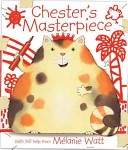
When Melanie Watt’s egomaniacal cat, Chester, returns determined to write his own masterpiece, a duel over the creative process ensues.
Materials from Canada

When Melanie Watt’s egomaniacal cat, Chester, returns determined to write his own masterpiece, a duel over the creative process ensues.
If you knew you were to read a story of a Prince Edward Island potato that had grown too big, you would be able to predict the rest: his peer potatoes would give him a hard time, right? Right. But in the end he would win out, right? Right again, in fact the prize for the Potato Beauty Contest. There is not too much to be put in the middle of such predictability, but Don Oickle has made a good effort. Because Edgar Potato is so near the surface, he gets to see and experience much of the lovely Prince Edward Island scenery. This makes up in part for the insults he receives from his smaller neighbour potatoes. He will not, they jeer, be able to become a wonderful baked or French fried or instant mashed potato. His fate will be to be made into pig food. After winning his beauty prize, Edgar’s last comment is “Maybe being bigger than all the others isn’t so bad after all!
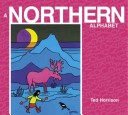
A is for Arctic, B for Bering Sea, C for Clyde River – and Z for Zangeza Bay – all to be explored above the 60th parallel. From the Hardcover edition.
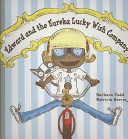
Edward wishes he could fly. But no matter how much he adjusts and re-adjusts the splurchler and turbo-twirler on his Skyhopper 2000, he can’t get off the ground. Imagine Edward’s thrill when he gets a coupon for not just one, but three wishes. Edward makes a wish that his Skyhopper could fly. And there it goes – Boing! Sproing! Z-z-ooom! – without him. Things really start to lurch out of control when his mother tells him to clean his room. Edward wishes that he didn’t have to! After a monster gobbles up the contents of his room until there’s nothing left to clean, Edward is determined to be more careful with his last wish. Wishes, like flying, should not be taken lightly. Will Edward ever figure out what he really wants to wish for?
An older unhappy, unkind gentleman is reminded he was not treated kindly by the other children in school is befriended by a scraggly cat ( with persistence from the cat). He becomes nice again.
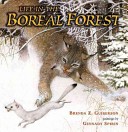
The great northern forest—the boreal forest—is home to a unique ecosystem of animals and plants. It covers one-third of the earth’s total forest area and is home to so many birds that it is known as “North America’s bird nursery.” The forest is a treasure trove of riches, but it’s threatened by increased human development and climate changes. This gorgeous book teaches readers about the boreal forest and reminds them that it’s up to us to make sure the beauty and bounty survive.
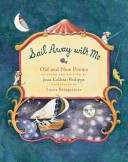
A collection of poems with sailing and sea themes, including traditional poems such as “My Bonnie Lies Over the Ocean” and “The Owl and the Pussycat.”
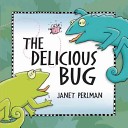
A pair of chameleons must learn to share and help each other when, during a fight over an insect that both caught at the same time, they wind up dangling from a branch above hungry crocodiles.
L3ee lives in a fishing village. One day she hears a little voice coming from a lobster crate ans she discovers Lucky, a talking lobster. Lee sets Lucky free and Lucky returns the favour one day when Lee nearly drowns in a wild spring storm.
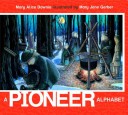
A is for Abigail and Anna, Zebediah’s two sisters. He is making them an alphabet book. From B, which stands for bandalore, a forerunner of the yoyo, H for the hornbook that taught children to spell, and on through the pigeons that blackened the sky, to the uniform that Papa wore when he defended the king, right through to X for the eXhaustion of parents who are homesteading. This lovely romp through the seasons on a pioneer farm is full of fascinating information. Artist Mary Jane Gerber has placed numerous items in each of her paintings and detailed borders, and there is a useful list of them for readers to find. Author Mary Alice Downie has included detailed background notes, making this a sweet introduction to our history. From the Hardcover edition.